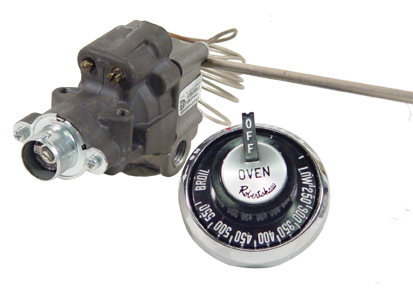There’s always a significant amount of cost involved whenever you buy a new piece of restaurant equipment. Those costs only continue as that equipment ages in your restaurant – from energy use to repairs, the consequences of new equipment will be around for a long time after you’ve written the check to purchase.
Of course, restaurant equipment makes you money as well. Without that fryer or reach-in refrigerator or griddle, you wouldn’t be able to prepare your product for your customers. But understanding the total cost of a piece of equipment over its lifespan has been ignored all too often in the food service industry for years.
Many chains have started doing Total Cost Of Ownership analyses for equipment because they buy large numbers of the same type of equipment all at once. A faulty or inefficient piece of equipment can mean thousands of dollars in extra expenses for the chain over the lifespan of the piece, and conducting a cost analysis beforehand helps avoid problems down the road.
By and large, most independent operators do not undertake the complicated task of calculating total cost – usually because the information or the know-how necessary to make an accurate calculation isn’t available.
That doesn’t mean independents and smaller chains can’t benefit from a cost analysis before they buy new restaurant equipment. In a continuation of yesterday’s post, here are two more factors to consider when calculating the total cost of a piece of equipment over its lifespan:
 Service and Parts Availability. Every food service operator loathes equipment downtime. If your equipment isn’t working, you’re losing money. Therefore it’s usually a good idea to do some research on the availability of equipment services and parts in your area before you buy. It’s also good to get an idea of how easy it is to make do-it-yourself repairs on a unit that will save yourself an expensive service call.
Service and Parts Availability. Every food service operator loathes equipment downtime. If your equipment isn’t working, you’re losing money. Therefore it’s usually a good idea to do some research on the availability of equipment services and parts in your area before you buy. It’s also good to get an idea of how easy it is to make do-it-yourself repairs on a unit that will save yourself an expensive service call.
There are many quality manufacturers in the food service sector who design units that are easy to pull apart and fix common component failures. If you’re shopping around, make sure you ask about common parts and how they can be fixed on each unit so you can get a better idea of how quickly (and affordably!) you can fix those problems down the road.
Finally, consider the availability of generic parts for new restaurant equipment pieces. Generic parts can save you a considerable sum of money if they are available for the unit you own, and are equal to or better in quality than Original Equipment Manufacturer (OEM) parts.
Ease Of Use. Energy efficiency is important, but so is labor efficiency. A piece of equipment that’s difficult or dangerous to operate means more training time and a higher incidence of work-related injuries. In a high turnover industry like food service, equipment that requires a lot of training to operate simply doesn’t make any sense.
In addition, difficult to operate equipment slows down production and reduces worker efficiency, which can bring some pretty high costs in a high-pressure environment like a restaurant kitchen. When people order food, they want it quickly and usually at the same time as a lot of other customers. Easy to use equipment that promotes employee efficiency rather than hindering it is an important cost to factor into your buying decisions.
Considering these factors before you buy a new piece of equipment will help you make an informed decision that goes beyond simply finding the lowest price. In many cases, the initial price tag has little to do with how much that piece of equipment will actually cost you over its entire lifespan. A total cost analysis helps you make a more informed decision.
If you’re interested in a more in-depth analysis of total cost, try this standard practice resource from ASTM International.
 Corner Booth Blog | TundraFMP Restaurant Supply, News & Equipment Blog
Corner Booth Blog | TundraFMP Restaurant Supply, News & Equipment Blog



